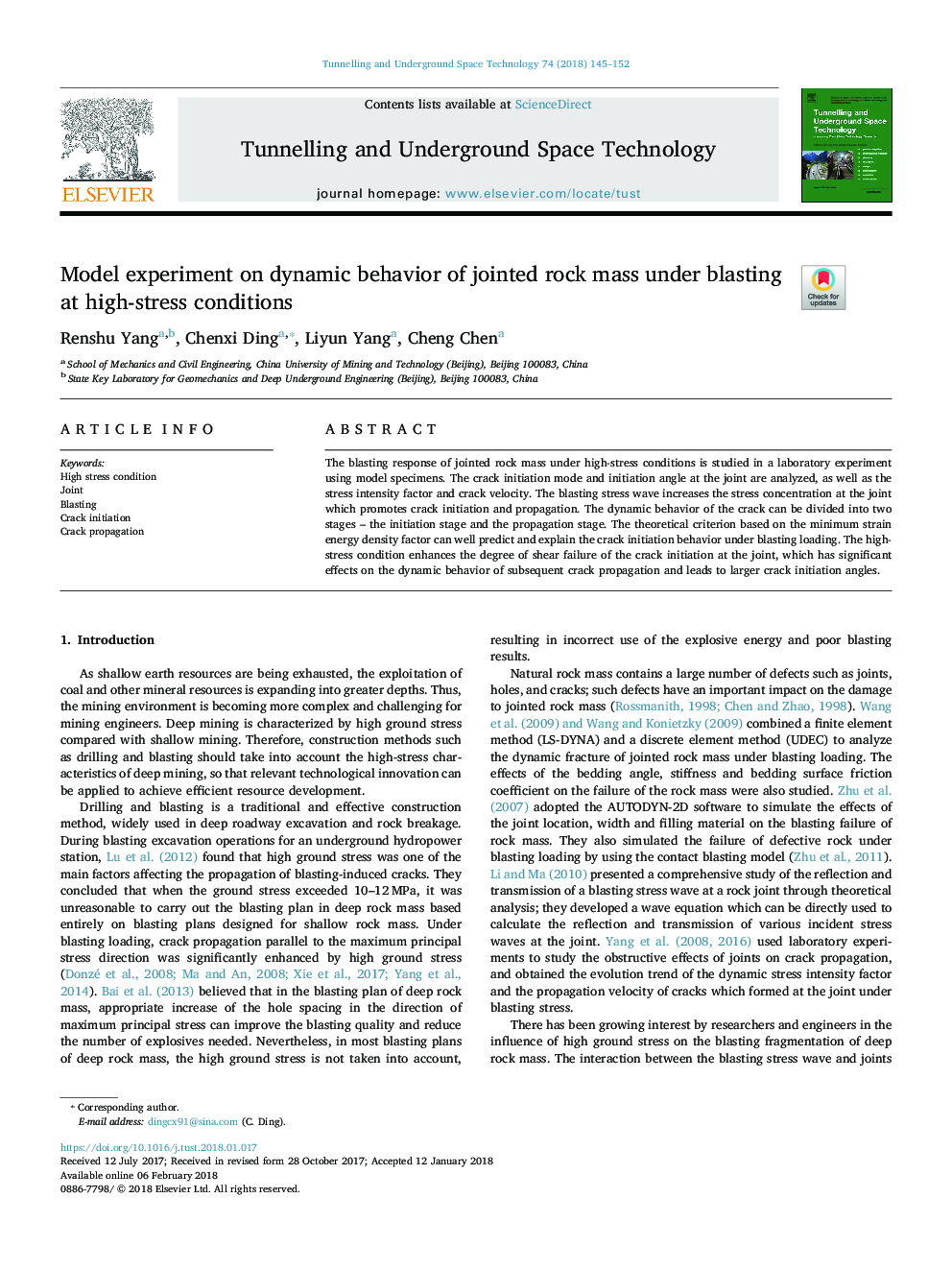| Article ID | Journal | Published Year | Pages | File Type |
|---|---|---|---|---|
| 6782642 | Tunnelling and Underground Space Technology | 2018 | 8 Pages |
Abstract
The blasting response of jointed rock mass under high-stress conditions is studied in a laboratory experiment using model specimens. The crack initiation mode and initiation angle at the joint are analyzed, as well as the stress intensity factor and crack velocity. The blasting stress wave increases the stress concentration at the joint which promotes crack initiation and propagation. The dynamic behavior of the crack can be divided into two stages - the initiation stage and the propagation stage. The theoretical criterion based on the minimum strain energy density factor can well predict and explain the crack initiation behavior under blasting loading. The high-stress condition enhances the degree of shear failure of the crack initiation at the joint, which has significant effects on the dynamic behavior of subsequent crack propagation and leads to larger crack initiation angles.
Related Topics
Physical Sciences and Engineering
Earth and Planetary Sciences
Geotechnical Engineering and Engineering Geology
Authors
Renshu Yang, Chenxi Ding, Liyun Yang, Cheng Chen,
